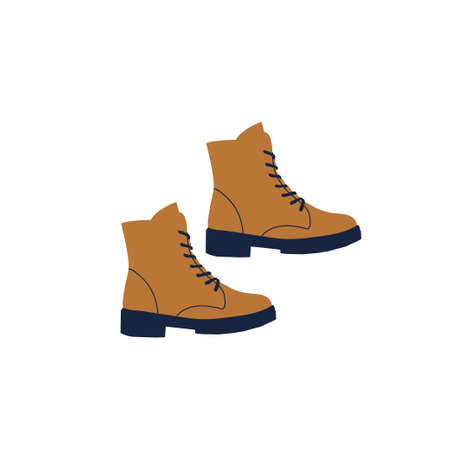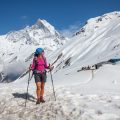Understanding Trail Conditions and Weather
When it comes to getting kids ready for the trail, understanding trail conditions and weather is the first step in picking the right footwear and clothing. The United States has a huge variety of landscapes and climates, from rocky mountain paths to muddy forest trails. Knowing what to expect makes it much easier to keep your child comfortable, safe, and happy while exploring.
Different Terrains Across the U.S.
Trails can look very different depending on where you hike. Here’s a quick breakdown of common terrains and what they mean for your gear choices:
| Region | Common Terrain | Gear Needs |
|---|---|---|
| Rocky Mountains | Rugged, rocky paths with steep inclines | Sturdy boots with good ankle support |
| Pacific Northwest | Muddy, wet forests; slippery roots and rocks | Waterproof shoes, quick-dry clothing |
| Southeast (Appalachians) | Dirt trails, occasional mud, humid conditions | Breathable shoes, moisture-wicking layers |
| Southwest Deserts | Sandy or gravelly, hot and dry | Lightweight shoes, sun-protective clothing |
The Challenge of Changing Weather
Weather can shift quickly—especially in mountainous areas. A sunny day can turn rainy or chilly without warning. In the Pacific Northwest, sudden showers are common even in summer. Being prepared for these changes is key for keeping kids comfortable.
Packing for Unpredictability
- Layering: Dress kids in layers so you can add or remove clothing as needed.
- Waterproof Options: Always pack a lightweight rain jacket or poncho.
- Extra Socks: Wet feet make hikes miserable—bring an extra pair just in case.
- Sun Protection: Even on cloudy days, UV rays can be strong at high elevations or in open areas.
Pro Tip: Check Local Forecasts Before You Go!
No matter where you hike, always check the local weather forecast before heading out. This helps you pick the best gear for your kid—and avoid any surprises on the trail.
2. Selecting the Right Footwear
Making sure your kids have the right footwear is one of the most important steps to keeping them happy and safe on the trail. The right shoes or boots can help prevent blisters, slips, and sore feet, making hiking a lot more fun for everyone.
What to Look For in Kids Hiking Shoes and Boots
- Fit: Shoes should be snug but not tight. Make sure there’s enough room for toes to wiggle, but not so much that the foot slides around inside.
- Support: Look for sturdy soles and ankle support if you’ll be hiking on rocky or uneven trails. Low-cut shoes work for easy walks, while mid- or high-cut boots are better for tougher terrain.
- Traction: Grippy rubber soles help prevent slips, especially on muddy or wet ground.
- Seasonal Needs: In cold or wet weather, waterproof materials and insulation can keep feet dry and warm. For summer hikes, breathable mesh helps avoid sweaty feet.
Popular American Kid-Friendly Hiking Footwear
| Shoe/Boot | Best For | Main Features | Price Range (USD) |
|---|---|---|---|
| Keen Targhee Waterproof Shoes | Muddy or Wet Trails | Waterproof, toe protection, sturdy sole | $60-$75 |
| Merrell Trail Chaser Sneakers | Day Hikes & Light Trails | Breathable mesh, good traction, easy Velcro closure | $35-$50 |
| Columbia Youth Newton Ridge Boots | Rocky Terrain & Cold Weather | Ankle support, waterproof leather, insulated lining | $60-$80 |
| Northside Cheyenne Hiking Boots | Bumpy Trails & Everyday Wear | Cushioned insole, durable outsole, water-resistant upper | $30-$45 |
| Saucony Peregrine Shield A/C Sneakers | Mild Trails & Parks | Easily adjustable straps, lightweight design, good grip | $40-$55 |
Tips for Getting the Best Fit
- Always try shoes on with the socks your child will wear hiking.
- Have your child walk around the store to check for comfort and fit.
- If shopping online, check size charts carefully and read reviews from other parents about sizing.
- Break in new shoes at home before hitting the trail—short walks are perfect for this!
- Packing an extra pair of socks helps prevent blisters if feet get wet or sweaty.
Don’t Forget: Comfort Over Style!
Kid-friendly hiking shoes come in lots of fun colors and designs, but comfort and safety should always come first. With the right pair of shoes or boots, your child will be ready to tackle any adventure on the trail!
![]()
3. Choosing Comfortable Clothing Layers
When you’re hiking with kids, keeping them comfortable is key to a fun experience on the trail. One of the best ways to do this is by dressing them in layers and picking the right materials for their clothing. Weather can change quickly, especially on longer hikes or at higher elevations, so knowing how to keep your child warm, dry, and cool when needed makes a big difference.
The Importance of Moisture-Wicking Fabrics
Cotton might be comfy at home, but it’s not the best choice for outdoor adventures because it holds onto sweat and can leave kids feeling cold and damp. Instead, go for moisture-wicking fabrics like polyester, nylon, or merino wool. These materials pull sweat away from your child’s skin so they stay dry and comfortable even if they’re running around or the weather heats up.
Popular Moisture-Wicking Fabrics
| Fabric Type | Pros | Cons |
|---|---|---|
| Polyester | Lightweight, dries fast, affordable | Can hold odors |
| Nylon | Durable, moisture-wicking, smooth feel | May not be as breathable as other options |
| Merino Wool | Natural, odor-resistant, warm even when wet | More expensive, needs gentle washing |
Dressing in Layers: The Basics
The layering system helps kids adjust their clothing as temperatures change throughout the day. Here’s a simple breakdown:
The Three-Layer System
| Layer | Purpose | Examples of Clothing Items |
|---|---|---|
| Base Layer | Keeps skin dry by wicking away sweat | Synthetic or wool T-shirt or thermal top and leggings |
| Mid Layer | Adds warmth and insulates body heat | Fleece jacket or light insulated vest/pullover |
| Outer Layer (Shell) | Protects from wind and rain/snow | Waterproof jacket or windbreaker with hood; rain pants if needed |
Adapting to Temperature Changes on Long Trails
If you’re planning a long hike, especially in places like national parks where mornings are chilly but afternoons get hot, teach your kids how to add or shed layers as needed. Encourage them to speak up if they feel too warm or too cold—being proactive keeps everyone happy and safe. Don’t forget hats for sun protection and gloves for unexpected cold snaps! Keeping an extra pair of socks in your pack can also save the day if feet get wet.
4. Prioritizing Safety and Protection
When it comes to taking kids hiking on U.S. trails, safety and protection should always come first. The right clothing and gear not only keep your child comfortable, but also shield them from the sun, bugs, ticks, and plants like poison ivy. Here’s how you can keep your young adventurers safe while exploring the great outdoors.
Sun Protection Essentials
The American sun can be intense, especially during summer hikes. To protect kids from harmful UV rays, choose clothing labeled with a UPF (Ultraviolet Protection Factor) rating. Look for long-sleeve shirts, pants, and wide-brimmed hats for maximum coverage.
| Sun Protection Gear | Why It Matters |
|---|---|
| UPF-rated shirts & pants | Blocks most UV rays and reduces risk of sunburn |
| Wide-brim hat or cap with neck flap | Shields face, ears, and neck from direct sunlight |
| Sunglasses (kid-sized) | Protects eyes from UV damage |
Bug Repellent Clothing
Bugs like mosquitoes and ticks are common on many American trails. Choose lightweight clothing that covers arms and legs. You can also find clothes pre-treated with insect repellent (like permethrin), which adds an extra layer of defense against bites.
| Bug Protection Option | How It Helps Kids |
|---|---|
| Pants tucked into socks or boots | Keeps ticks from crawling up legs |
| Treated shirts & pants | Repels mosquitoes and ticks without sprays on skin |
| Light-colored clothing | Makes it easier to spot ticks before they bite |
Guarding Against Ticks & Poison Ivy
Ticks and poison ivy are two big concerns when hiking in wooded or grassy areas across the U.S. Teach kids to stay on marked trails and avoid touching unknown plants. After the hike, do a full tick check—especially behind ears, under arms, and around waistbands.
| Hazard | Prevention Tip | What To Do After Hike |
|---|---|---|
| Ticks | Wear long sleeves, pants; use bug spray on shoes & socks; tuck pants into socks. | Check scalp, behind knees, waistline; remove ticks promptly with tweezers. |
| Poison Ivy/Oak/Sumac | Avoid brushing against plants; learn what they look like (“leaves of three”); wear high socks. | Wash skin & clothes with soap and water if contact is suspected. |
Quick Tips for Parents:
- Packing extra layers helps if weather changes suddenly or if clothes get wet.
- Bring sunscreen (SPF 30+) and reapply every couple of hours, especially if kids sweat or play in water.
- If your child has allergies or sensitive skin, test new clothing or repellents at home first.
Your child’s safety starts with what they wear—choose smart, protective gear for every hike!
5. Packing Essentials for All-Day Comfort
Extra Accessories: Keeping Kids Comfortable on the Trail
When you’re getting your kids ready for a day hike, it’s not just about shoes and jackets. American families know that packing the right extras can make or break a hiking adventure. Here’s how to make sure your little explorers stay happy, dry, and comfortable all day long.
Socks Matter More Than You Think
A good pair of socks is just as important as sturdy shoes. Choose moisture-wicking materials like wool or synthetic blends—these help keep feet dry and prevent blisters. Always pack an extra pair so kids can change if their socks get wet from puddles or sweat.
Backup Clothing: Be Ready for Anything
Kiddos are experts at finding mud, streams, and sometimes even unexpected rain showers. Bringing backup clothing is a must! Pack an extra shirt, a pair of pants or shorts, and underwear in a zip-top bag. This way, you can quickly swap out wet or dirty clothes and keep everyone comfortable.
Rain Gear: Expect the Unexpected
The weather on the trail can change fast. Lightweight rain jackets or ponchos are essentials in many American families’ hiking packs. Look for options that pack down small but offer full coverage. Some parents also bring rain pants for soggy days—especially if there’s lots of tall grass or underbrush.
How American Families Keep Kids Happy and Engaged
Packing isn’t just about comfort—it’s about fun too! Here are some small items families often bring along to keep kids motivated on the trail:
| Item | Why It Helps |
|---|---|
| Lightweight Binoculars | Keeps kids interested in spotting birds and wildlife. |
| Trail Snacks | Frequent snack breaks boost energy and morale. |
| Pocket Field Guides | Makes identifying plants or animals a game. |
| Small Notebook & Pencil | Let kids draw what they see or write down discoveries. |
| Favorite Toy/Stuffed Animal | A familiar friend for comfort during tough moments. |
| Sunscreen & Bug Spray | Protects sensitive skin from sunburn and bug bites. |
Packing Tip:
Let your child help pack their own small backpack with lightweight essentials. This gives them ownership of their gear and gets them excited about the adventure ahead!


